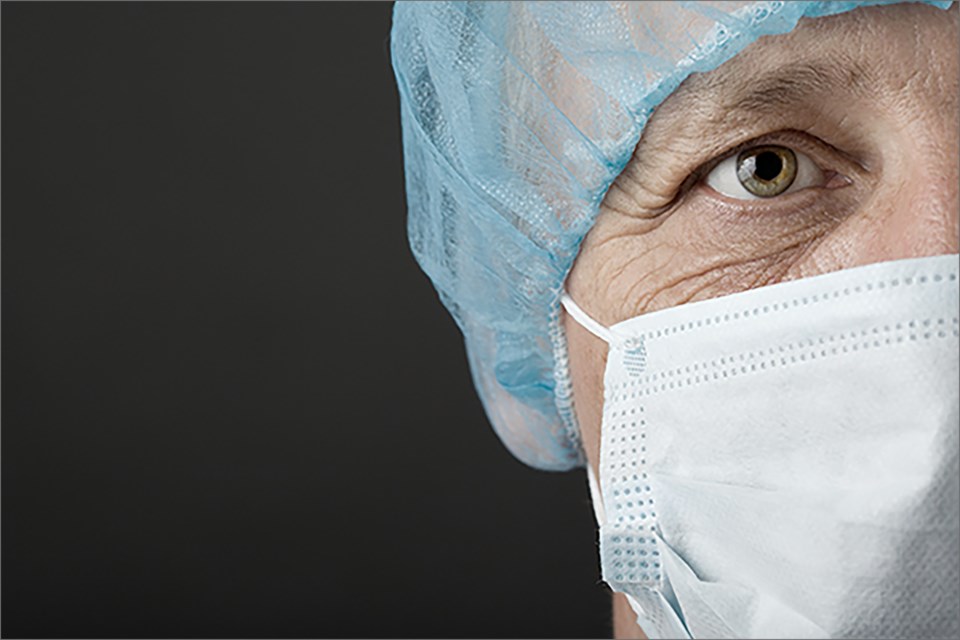Max Liedke, Sault Area Hospital (SAH) vice president and chief financial officer, delivered a report to the hospital’s board of directors Monday which confirmed what everyone knows.
SAH, like other hospitals across the province, is under enormous pressure to deliver services in the face of declining funding, and hospital boards, management and staff are finding it more difficult to come up with strategies to cope.
The answer is simple, Liedke said.
More government funding is needed.
“There needs to be a substantial investment made,” Liedke told the board Monday.
With a provincial election to come in the summer, a SAH report which accompanied Liedke’s presentation stated “no matter the Party that forms the government now or into the near future, the challenges remain the same.”
“Without real investments, we will be facing a crisis in Ontario’s hospitals,” the report declared.
Over the last five years there have been periods of declining funding from the province, or even zero per cent funding increases, forcing SAH to find about $25 million in annual efficiencies within its operations, Liedke told the board.
“Year over year, we’ve had to continuously find how can we do things better for less dollars here at the hospital, but still delivering that quality of care and not reducing or eliminating any of the services we provide at the hospital, so it’s a pretty significant challenge on an operation to find these efficiencies on an annual basis,” Liedke said.
That challenge comes at a time in which Liedke said 46 per cent of Ontarians surveyed said they believe the quality of health care in the province has deteriorated over the last five years, while only 17 per cent believe it has improved in that time.
SAH has a catchment area of 115,000 people, with higher rates of heart disease, stroke, COPD, transport accidents, lung/colon/lymph cancer, chronic lower respiratory diseases, high blood pressure and diabetes.
That goes along with a projected increase of seniors in Algoma over the next 20 years, the number of people 65 and older increasing by 55 per cent, from 16,000 now to over 24,000 in 2036.
“The pressure that will put on the hospital will be enormous…we could have one of the highest populations that are senior-based (in Ontario),” Liedke said.
687 people in Sault Ste. Marie and Algoma were waiting for placement in a long term care home as of Nov. 2017, while 20 per cent of all SAH beds are taken up by patients who should be receiving care in another, more appropriate setting (such as long term care homes).
Even with no further changes or additions to that list, Liedke said “it would take two years plus to be able to place all those patients” in an alternative setting.
There is a glimmer of hope on the long term care horizon, Liedke said, pointing to provincial announcements for 5,000 new long term care beds in Ontario over the next four years and a total of 30,000 new beds over the next 10 years.
“We definitely are very interested in working with our community partners first to see that the interim beds we have in the community are converted to licensed, full term, long term beds, and that there is additional investment to meet the long term care bed needs in our community,” Liedke said.
International standards for safe hospital operations state hospitals should operate at 85 per cent capacity.
“SAH occupancy continues to exceed 100 per cent despite significant efforts to innovate and improve how we deliver care,” stated SAH literature which accompanied Liedke’s report.
“This fiscal year we’ve been operating at an average occupancy rate of about 118 per cent, so it does not give us the ability to put patients in the right bed at the right time to get the right care,” Liedke said.
One-time surge funding for hospital beds has recently been announced, but Liedke said “as of today we have still not received any confirmation from the Northeast LHIN around what that’s going to look like.”
“We don’t know the exact number of beds we’re going to get funded, we don’t know the exact timing…or what the dollar amount is,” Liedke said.
Given the hospital’s money problems, Liedke said SAH needs a funding increase of about 6.55 per cent for operations, to battle inflation, for growth in services and for the establishment of a patient safety and equipment fund.
“Over the next 10 years we’re going to require about $53 million in capital funding, and on an annual basis about $5 million to replenish the capital we’ve had in the hospital (excluding the hospital’s Health Information System and electronic medical record technology).
“(We must be) able to maintain the level of services that we provide in our community, to ensure we continue to provide quality patient care and that we don’t have any debts in our operations,” Liedke said.
